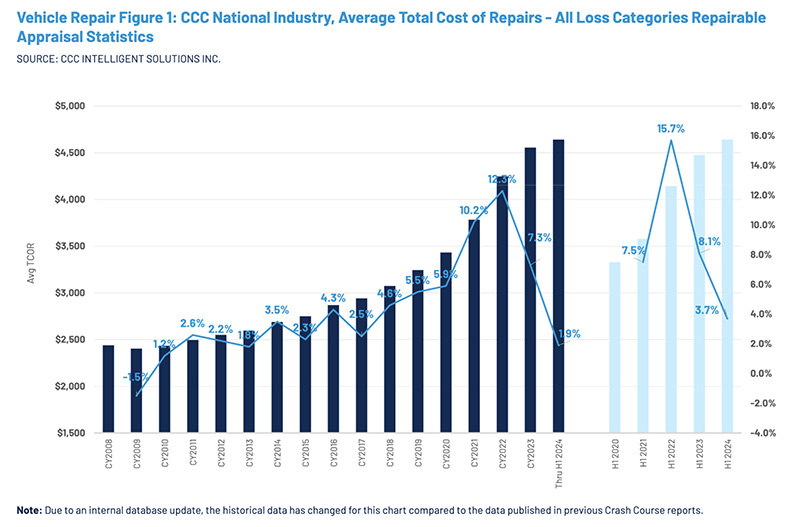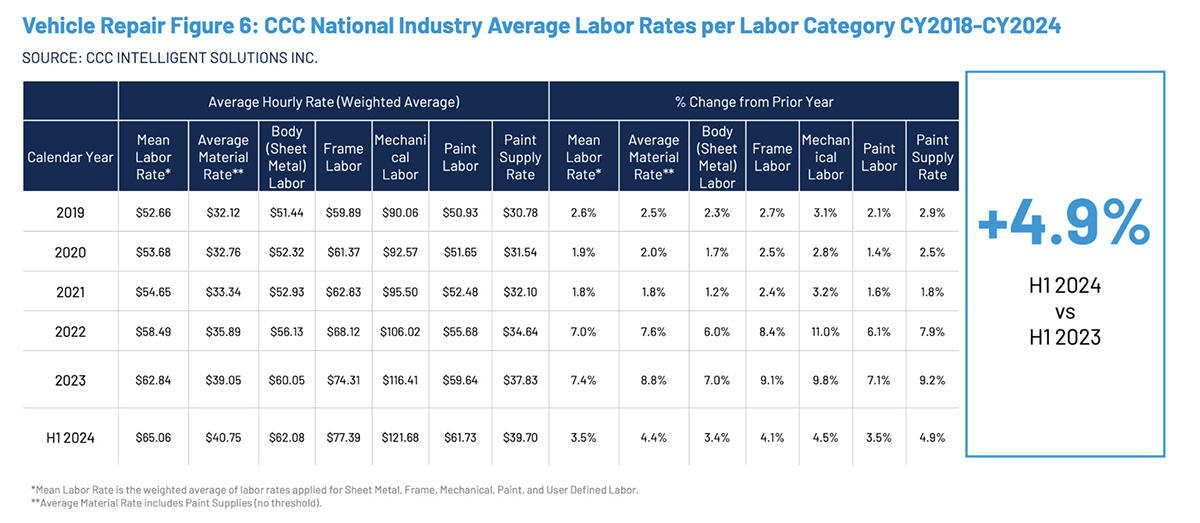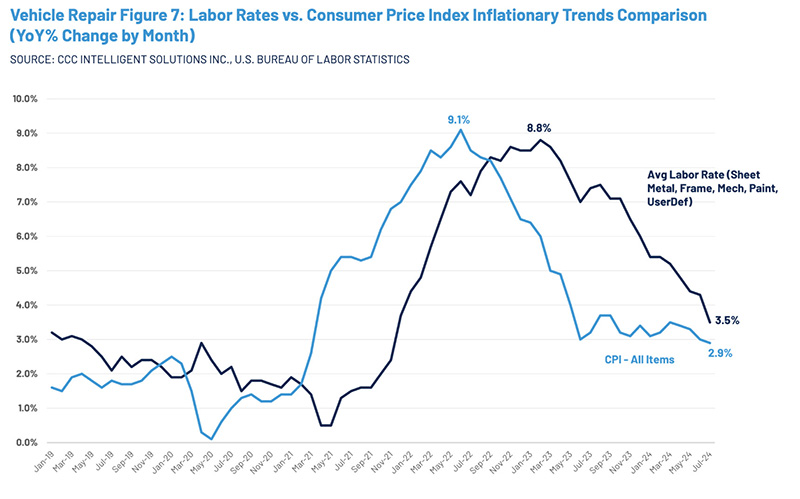Third quarter Crash Course report explores trends impacting auto claims and collision repair.
CCC Intelligent Solutions Inc. (NASDAQ:CCCS) today published its Crash Course Q3 2024 Report, identifying the key trends that will shape the auto claims and collision repair industry in 2025. The report examines pressing challenges such as the impact of inflation and labor shortages, the growing impact of electric vehicles (EVs) and rising repair costs, while also offering insights to help insurers and repairers successfully navigate the complexities of the year ahead.
Crash Course is based on information derived from 300 million claims-related transactions and millions of bodily injury and personal injury protection (PIP) /medical payments (MedPay) casualty claims processed by CCC customers using the company’s solutions.
“2025 will present unique challenges and opportunities for the auto claims and repair industries,” said Kyle Krumlauf, director of industry analytics at CCC and co-author of Crash Course. “From rising repair costs and labor shortages to the growing complexity of vehicles and supply chain disruptions, staying ahead of these trends is critical to the industry’s viability. Our Q3 report provides key insights and strategies the industry can use to overcome these challenges and succeed in an increasingly competitive market.”
Rising Repair Costs and Vehicle Complexity
The total cost of repair (TCOR) increased by 3.7% in the first half of 2024 compared to the same period in 2023, driven primarily by labor and parts costs. Labor rates in the first half of 2024 rose by 4.9% year-over-year compared to the first half of 2023.
Labor rates were up 7.4% for 2023, following a 7% increase in 2022. Another factor driving increased cost is the growing complexity of vehicles, particularly with the increased adoption of EVs, is resulting in more parts and labor hours per repair.
According to the report, the increase in labor rates in estimates is lagging behind the Consumer Price Index by nine months. As the rate of inflation continues to slowly decline, labor rate inflation is coming closer to falling in line.
Electric Vehicles (EVs)
EVs now represent 2.4% of all repairable claims in the first half of 2024, up from 1.6% in the same period in 2023. However, EV repairs remain more expensive than non-EVs, with the average repair cost for an EV 46.9% higher than that of a non-EV. Labor accounts for 43.3% of total EV repair costs in vehicles three years or newer, compared to 36.5% for non-EVs.
CCC cautions that this is not an apples-to-apples comparison. The non-electric vehicle segment of the car parc is larger and more mature than the EV segment. 78.7% of H1 2024 repairable EVs are 3 years old or newer, while just 27.8% of non-EVs are 3 years old or newer. For vehicles 3 years old or newer, the average H1 2024 EV TCOR was $6,924, which was 20.4% higher than non-EVs within the same age group.
Total Loss Frequency
CCC data reveals a 1.8% year-over-year increase in vehicles flagged by carriers as total losses in 2024, primarily due to the continued erosion of used vehicle values and a maturing vehicle pool. 73% of valuations are for vehicles seven years or older, reflecting the aging nature of the U.S. car fleet.
Previously published annually, Crash Course is being released quarterly in 2024 to provide more frequent updates on key trends and insights.


